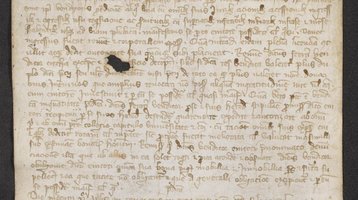Synergies and a supernova
Library staff, faculty, and students join forces to drive new astronomical discoveries
The University of Chicago Library continues to look to the sky in our ongoing collaborative work with Professor Rich Kron, Department of Astronomy and Astrophysics, exploring the use of data obtained from historical astronomical glass plates to drive new astronomical discovery. Since we last reported on the project in 2019 (“Mining historical glass slides for astronomical data”), a National Science Foundation grant, new collaborations, and detection of a likely supernova have furthered our work, strengthened our partnerships, and expanded our experiences and expertise.

A recently awarded grant from the NSF EAGER program will support our work with the more than 175,000 images of astronomical objects captured on photographic glass plates at Yerkes Observatory. Dry glass plate photography was used for astronomical imaging from the late 1800s through the 1980s, and the Yerkes plates are part of an estimated 2.4 million astronomical glass plates held at various institutions in North America. These images tell a story of how the night sky has changed over time and are a potentially rich source of data for modern science. The EAGER award will allow us to research, analyze, and develop methods for using low-barrier, off-the-shelf scanning equipment to digitize glass plates at a quality sufficient for scientific use. The grant will also support investigation into techniques for transcribing the complex data recorded on the plates and their associated logbooks, and strategies for making the data and images accessible and usable by researchers and historians worldwide.

The project team, which consists of staff from the Library, astronomy faculty, and undergraduate students interested in astronomy, computer science, and the history of science, have been working with some of the glass plates documenting observations made at the Yerkes Observatory in Williams Bay, Wisconsin. Ownership of the Yerkes Observatory, formerly operated by the Department of Astronomy and Astrophysics at the University of Chicago, has been formally transferred to the non-profit Yerkes Future Foundation (YFF). Thanks to a close working relationship between the team and the YFF, we have ongoing access to and use of the plates collection for academic purposes.
Our concern for and interest in historical astronomical glass plate collections is broadly shared by other institutions with similar collections. We have been facilitating regular meetings of an international group of astronomers and librarians to explore approaches to preserving and sharing glass plate collections produced during the last century by observatories around the world. This intra-institutional collaboration is helping us work toward best practices for managing these collections, and making new connections among collections and other resources. We are currently pursuing just such a connection with an existing digital project. Digitized by the Georgia Institute of Technology Library, Edward E. Barnard’s 1927 Photographic Atlas of Selected Regions of the Milky Way contains reproductions of photographs of Barnard’s original astronomical glass plates from the Yerkes collection. We are exploring digitizing the original plates to enhance the online atlas by uniting high-quality images virtually with the work digitized from the printed volumes.
The students, working with Prof. Kron, have recently demonstrated the potential value of historical astronomical images for scientific discovery. In their analysis of the level of precision that could be obtained with the off-the-shelf equipment used for scanning the glass plates, they compared the image from a glass plate with a modern image from the Sloan Digital Sky Survey of the same part of the sky, an area containing many thousands of stars. One of those plates, Ry60 taken in 1903, turned out to have captured something that was not present in the modern image. Their observations support the plausibility that the object might be a supernova. The students have written a research paper describing their analysis process and published it on arXiv.org, an open-access archive for scientific articles.
This collaboration has created synergies between the expertise of the Library in preservation and digital accessibility and the expertise of the students and faculty in the analysis of the digital images and the understanding of the scientific use of the plates. In this productive partnership,we all learned from one another.


